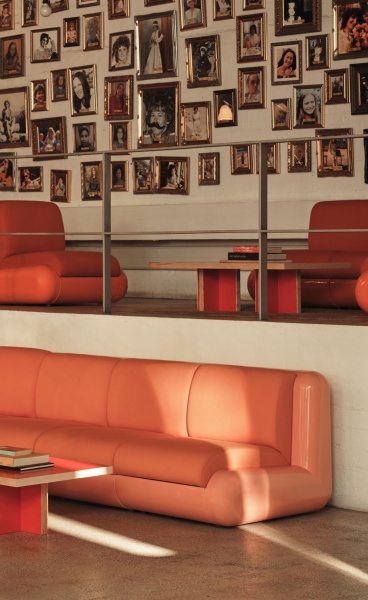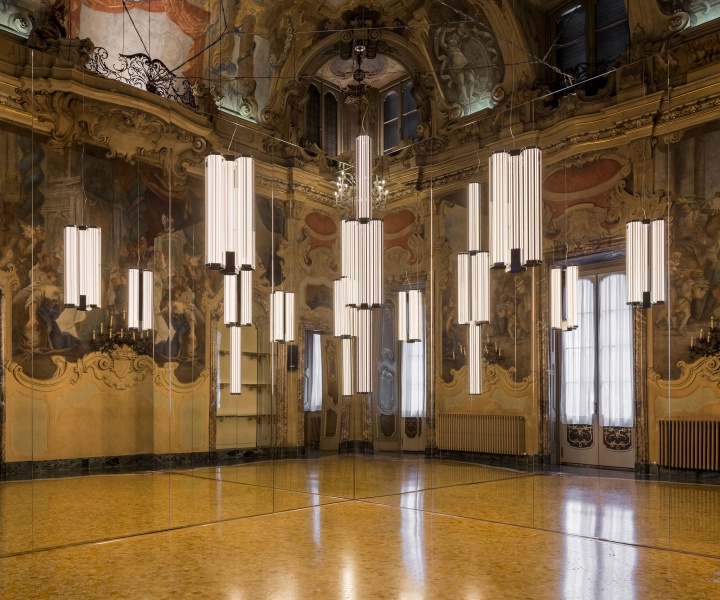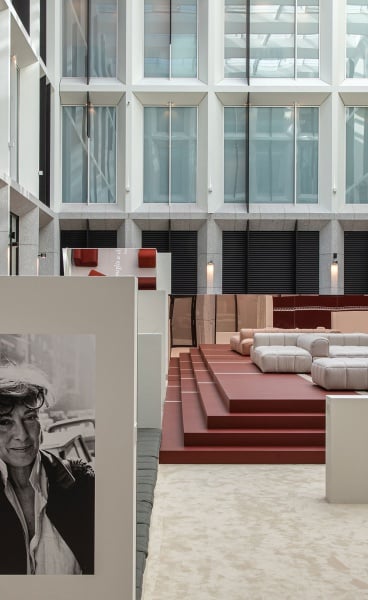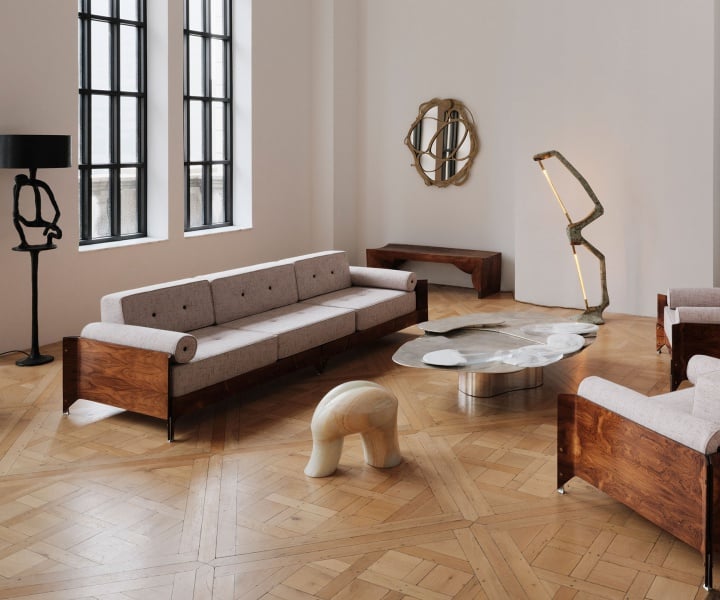| Detailed Information | |||||
|---|---|---|---|---|---|
| Project Name | Made by bees | Posted in | Art, Interview | Artist | Tomáš Libertíny |

Tomáš Libertíny, The Unbearable Lightness (detail), 2010.
photo © Jos Kottmann.
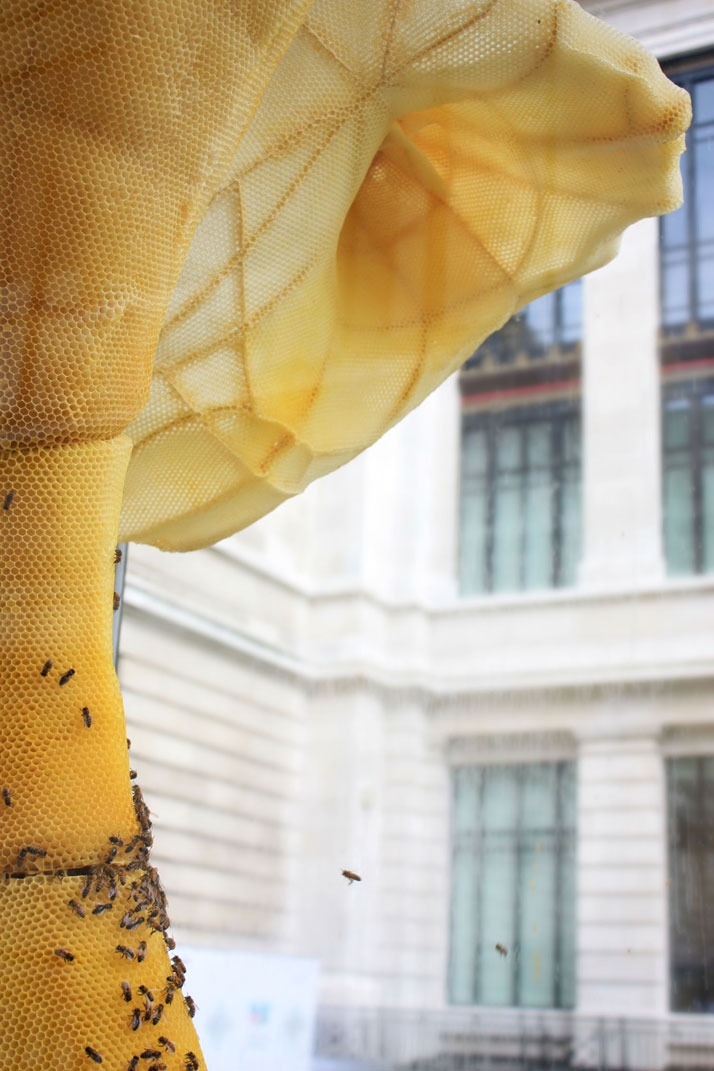
Tomáš Libertíny, The Agreement, 2012. (detail).
photo © Studio Libertíny.

Tomáš Libertíny, photo by Jos Kottmann.
Pioneering and highly experimentation oriented, Tomáš Libertíny is not one to settle for the prescribed status quo. With a wide-ranging background spanning engineering and industrial design through to painting and sculpture, he could very well be described as a modern-day Renaissance man. His curious mind and visionary exploration of both the physical and the philosophical, lead him to challenge conventions in the design and construction of objects, as well as our relationship with them, as he searches for answers in the most innovative of production methods. Pushing the limits of what is possible, his work ingeniously combines the technical know-how of industrial design with the poetry of art, blurring as a result the lines between creative disciplines and industry norms.
Libertíny's Made By Bees project began as an experiment in the ephemeral and the manipulation of nature, through which he set out to explore the creative possibilities of sculptures designed by man but built by a buzzing swarm of bees. The project has since morphed into a highly acclaimed series of beeswax artefacts that now feature in the permanent collections of established institutions around the world, including the ultimate art Mecca that is the Museum of Modern Art in New York. From the beautifully crafted ‘The Honeycomb Vase’ (2007) and the ‘Vessels’ series (2011) all the way to ‘The Agreement’ (2012), a site-specific installation situated on the lawn of the Natural History Museum in London, and the captivating, Design Miami/Basel Designer of the Future award-winning piece ‘The Unbearable Lightness’ (2010), his work lays the ground for a distinctive setting in design where nature, science and art collide.
In trying to understand the natural and industrial process of beeswax as a building material, Libertíny spent months working with beekeepers in order to come up with a way to construct a shape over which the bees could build a honeycomb. This led him to develop a technique for harnessing bees to create physical objects on demand, intervening in the natural creation process of the beeswax not only in terms of form but also pigmentation. Eager to find out more about his impressive work, we caught up with him and picked his brain on his extraordinary collaboration with Mother Nature, the creative passions that fuel his mind and his remarkable views on art and design.
What is the story behind your relationship with bees? What inspired you to start working with beeswax?
The idea of ephemeral design was very appealing to me. Take an archetypal candle for example. Its form is strictly guided by the way it works. A beeswax candle is, for me, the best design icon. Absolutely nothing is styled about it. Every single choice made in its design is focused on the science of keeping the flame burning. The physics (and chemistry) of a candle is beautifully complex and simple at the same time. The ‘Made By Bees’ project started in 2005 initially as an experiment in the ephemerality of objects focusing, later on, on the manipulation of nature. I wanted to push the envelope of what is possible by understanding a non-industrial process and what it entails. Whereas designers are limited by machines, in this case, I was limited by bees. It was an architecture harnessed directly from nature. The more you understand - the more you can do. It was and is a spiritual journey which teaches you kindness and patience. I have never met an arrogant beekeeper. One can only wonder why...
Tell us about the creation process of the beeswax sculptures. How do they come to life? What level of control do you have over the finished artefact?
The idea of control is very interesting. During the research phase (lots of trial and error), I concluded that there is a certain range of curvatures the honey bees will accept (when offered a foreign template). I had many ‘misfits’ because I was aiming for a specific design instead of a random structure. This family of convex and concave curves gave me a vocabulary to work with. There was a beautiful link between the energy source (flowers), the machine (bees) and the product (a vase for flowers). The bees were like a cloud of nano-3D-printers. I called this process Slow Prototyping. With each new project I tried to push the limits of what is possible and explore the stories that could be told. The process is relatively time consuming and requires preparation. The actual building that the bees do must be observed. It’s like growing a bonsai. One has to intervene to direct the growth and cut away the paths where energy could be wasted.
Although ‘The Honeycomb Vase’ was quite simple in its construction, the commission we got for the London Olympics last year for ‘The Agreement’, required complex CAD work and calculations for the realization of the framework. We spent as much time behind computers as we did at the apiaries. With every project, I set new challenges for myself as well as for the bees.
Each new work is unique and cannot be replicated. You have to give up the idea that you have absolute control over the process.
There appears to be a direct religious reference to the Crucifix in ‘The Unbearable Lightness’. Was Christian iconography the driving force behind it, or was it something more universal?
Yes, there is a religious reference in ‘The Unbearable Lightness’. However, I never thought of it as a figure of Jesus Christ. I was interested in the shape (the human body) because it was very complex, vertical and hollow (like a vase). In this work, honey bees participated in building a religious symbol that they can’t observe or comprehend. They’re just programmed by their DNA to behave in a certain way.
The work also reflects on Camus’s Myth of Sisyphus and the idea of a hero who is aware of his/hers own destiny, to acknowledge our own limitations. Isn’t it great to think that we, like bees, participate in something we have no idea about? Maybe we too can’t and will never be able to see that what we are actually doing is/has been determined by something else.
Your work fuses the technical know-how of industrial design with the poetry of art. As you hail from a wide-ranging creative background, do you see yourself more as a designer or an artist? Tell us something about your creative passions and ambitions.
My father is an architect and my mother is a historian. I studied engineering, painting, sculpture and conceptual design. In my office I try to work in both dimensions: as a researcher and as a designer. Being an artist is nowadays more about a certain social status than possessing a particular set of skills. I’ve always been a firm believer that an artist is someone who has mastered something better than everyone else. So being an artist has nothing to do with the idea of presenting objects in an art gallery. It’s about making the ordinary seem extraordinary, be that words, music or movement. As the two words art and design are not of the same category (unlike apple and pear), the question is obsolete. In addition, art is more like a noun and design is more like a verb. As Dieter Rams says: ''TO DESIGN IS TO THINK''.
My creative passions are in two parallel worlds: physical and philosophical (theoretical). I am just as interested in structures, materials and building processes as I am in the human soul, religion and beauty.
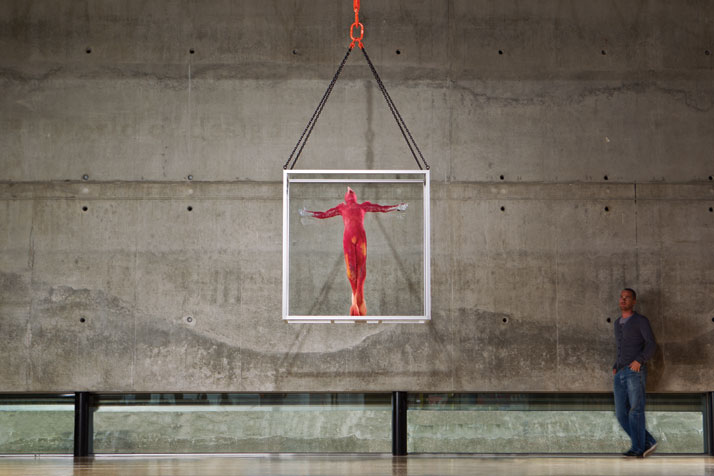
Tomáš Libertíny, The Unbearable Lightness, 2010.
Beeswax, Stainless steel, Glass, Steel, Plastic, Resin
122 x 250 x 45 cm
Courtesy of Studio Libertíny.
photo © Jos Kottmann.
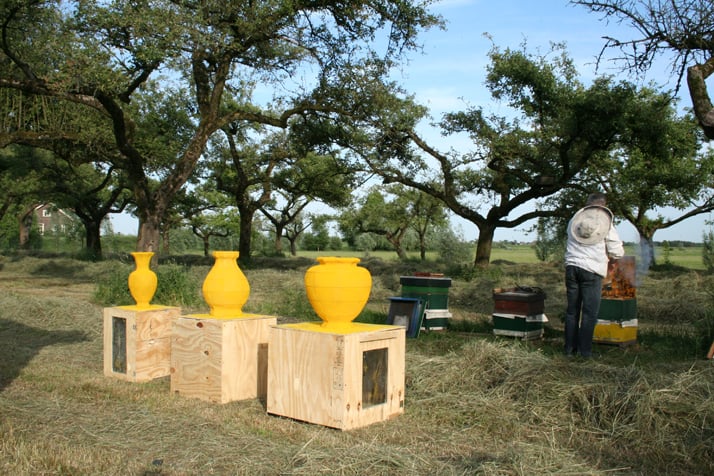
photo © Studio Libertíny.
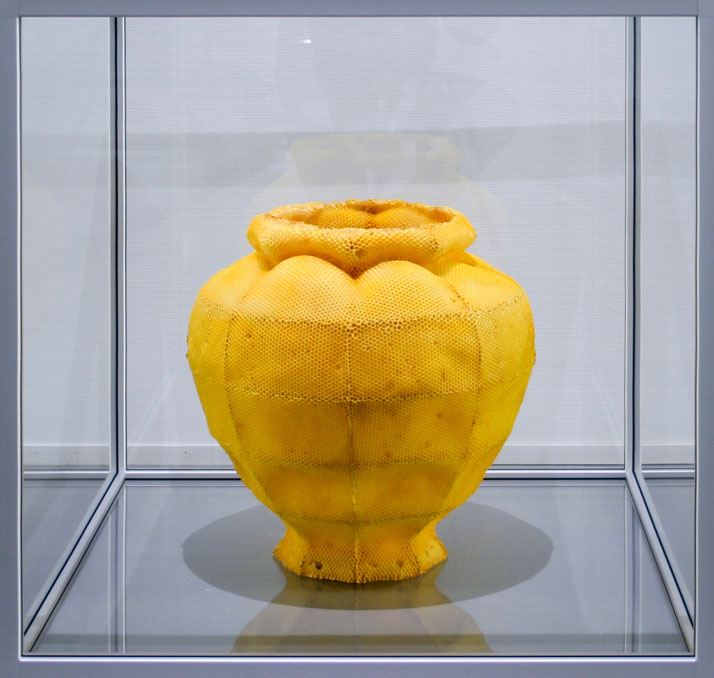
Tomáš Libertíny,Vessel #2, 2011.
beeswax, glass, alumnium.
86 x 86 x 86 cm (cabinet).
50 x 35 x 35 cm (vessel).
Collection: Museum Boijmans van Beuningen.
photo © Studio Libertíny.
By using materials such as beeswax and paper to create vessels, vases or a table, you’ve produced objects that contradict the norms in industrial design, ultimately rendering them unusable. Would we be right to interpret this as a critique of current consumerist society, or was that never your intention?
Although the choice of materials was guided by a critique of industrial production, I wasn’t taking an opposition stance, instead merely providing a supplement to the mainstream agenda. It wouldn't make sense to make and sell beautifully crafted artefacts (such as ‘The Paper Vase’) in order to criticize consumerism. If I wanted to criticize consumerism, I would probably choose a different medium or take a direct action. People don’t change because they see an object and realize how wasteful their life is. You change when someone else acts differently and sets an example.
Having said that, the objects were inspired by the thoughts I had on consumer society, especially after reading Gilles Lipovetsky’s ‘The Empire of Fashion / Dressing Modern Democracy’, however they are autonomous experiments and as objects claim nothing apart from what they are. They’re honest.
What’s also interesting is the fact that you introduce bees, an endangered species, into the context of art, which in its own way is also struggling to survive and stay relevant today. How do you see the role of art today and how relevant do you think it will be in the future?
This is a very good question. The fact that bees are disappearing is alarming. The worst part is that for a couple years we didn’t have the faintest idea why. I think the whole ‘Made by bees’ project at least helped to raise awareness of their importance and fragility. I am happy to read about all kinds of bee-related activities that are taking place in major European and US cities.
The relevance of contemporary art has been in question for sometime already. Maybe it is time to admit that contemporary art doesn’t have any aspirations to be part of solving the problems that we face. Problems that are relevant today stem from the growing population, the destruction of our habitat, food distribution, social loneliness in the profusion of digital sharing etc. Sciences give us new tools to work with and different cultures give us a moral compass. The problem in your question is somewhere else. Today’s artist is not the same artist he/she was 400 years ago. Back then, artists were much more connected with their environment and were still bound to excel in a particular craft. Now, I don’t think one should expect anything from contemporary art. Let’s think of it like a cat - you can’t force it to obey you and be of service to you like a dog. Art is like a wild animal. You just have to let it be and appreciate its beauty.
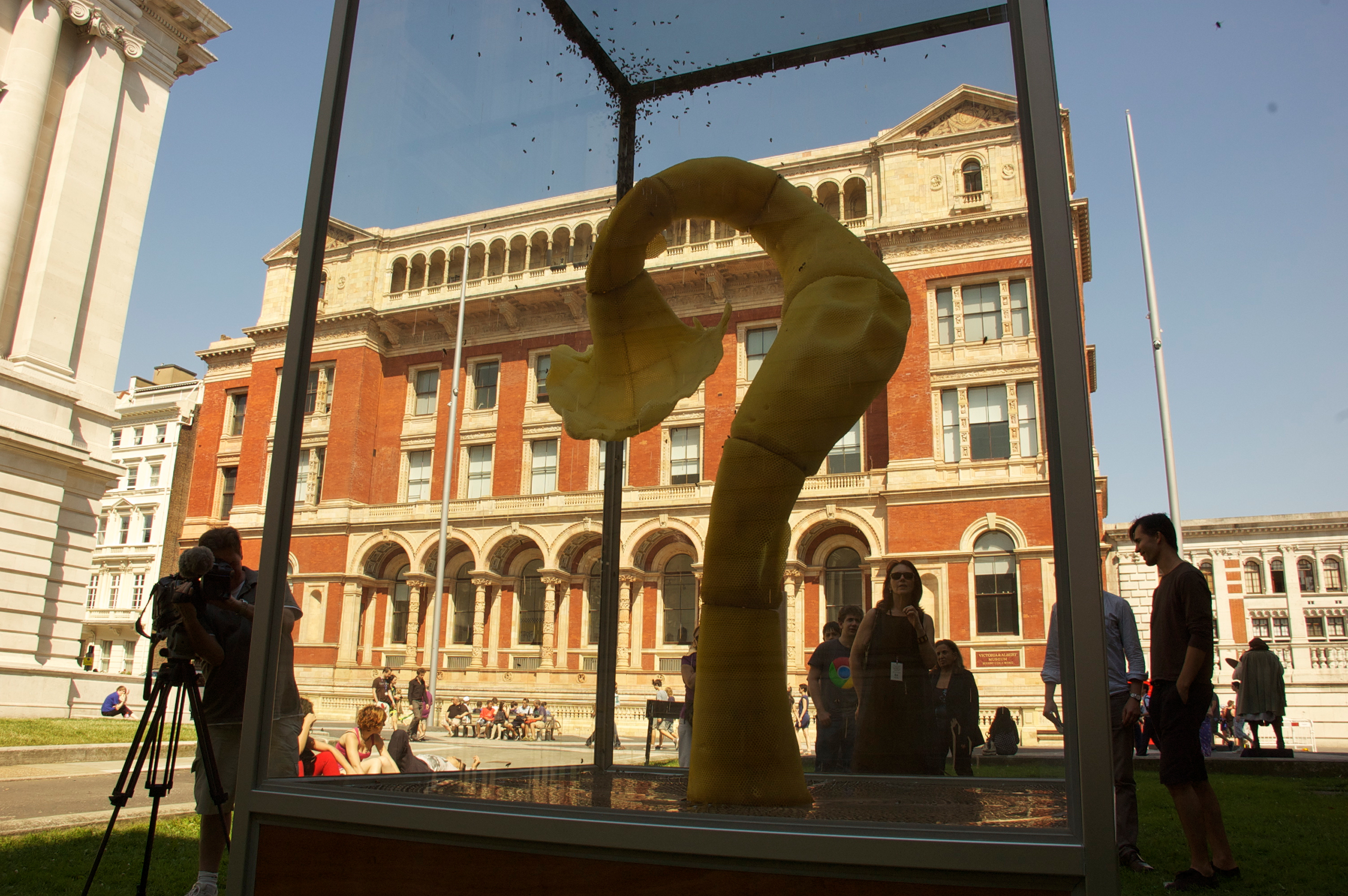
Tomáš Libertíny, The Agreement, 2012. (detail).
photo © Linette Frewin.
‘Copy’ and ‘steal’ are the ultimate bad words within art and design circles. Maybe it starts early in the formative years of design education. Maybe it stems from a desperate need to prove one’s originality in a field where everyone is looking for the next big thing. But, interestingly enough, you have a different take on the educational benefits of ‘copying’. Can you tell us about it?
I wrote an essay on this subject for Dezeen’s Opinion column. I am surprised that very few educational design institutions don’t actually teach in this way. Internships at bigger studios will rarely give you the close interaction with the ‘master’. The idea of an apprentice has almost completely disappeared. In the arts world of times gone by, old masters were always a subject of admiration and were frequently copied. Painters used to go to museums and copy paintings to learn different techniques. Similarly, nothing will replace the experience of trying to make a replica of let’s say Gio Ponti’s ‘Superleggera’. By understanding the construction of the object, you learn about the qualities of the material. By analyzing the parts, you will understand their role in the bigger whole. When you copy something, your learning curve is exponential. What is completely different is where you have a situation when you copy to commercially, or otherwise, exploit the original. I mentioned in my essay that this type of learning process takes a step further in a purposeful direction, acknowledging the source and paying tribute to the ongoing building of knowledge that defines culture and humanity.
On that note, in an interview from 1972, Charles Eames in answering the question as to whether design is an expression of an individual answered: ''No, because to be realistic, one must always admit the influence of those who have gone before.''
What does the future hold for you? What are your aspirations? Are there any new projects that you’re currently working on?
I’m continuing to explore the ‘Made by bees’ project in its endless complexity and variety. Some observations are being transformed into full scale architectural proposals and installations. I am looking into other nature-informed processes and materials too.
The studio is also focused on the realization of projects for a wide range of clients, collectors and institutions. In addition, I'm collaborating with others creative minds on meaningful products and projects where the power of context and an innovative approach in materials and technologies is crucial.
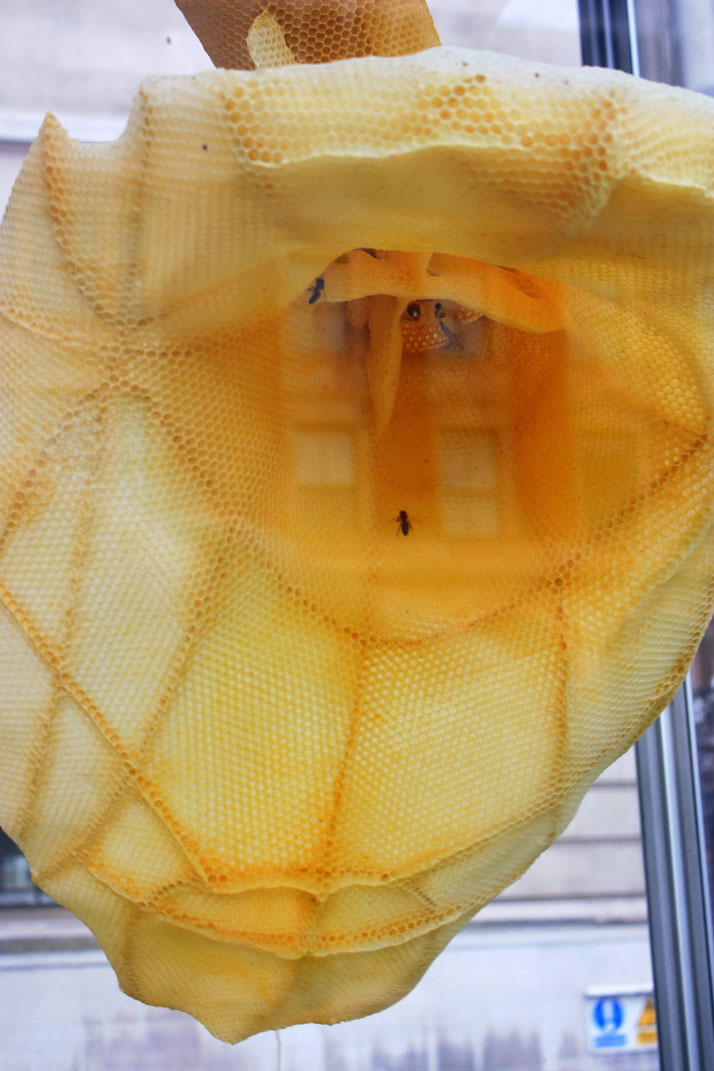
Tomáš Libertíny, The Agreement, 2012. (detail).
photo © Studio Libertíny.
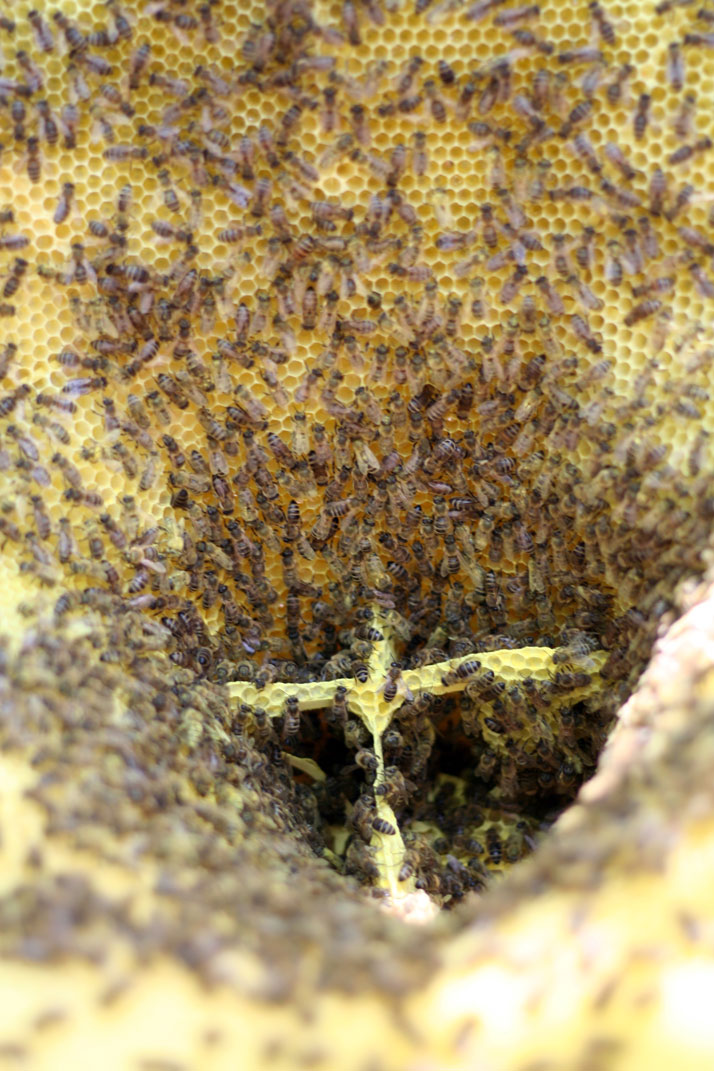
Tomáš Libertíny, The Agreement, 2012. (detail).
photo © Studio Libertíny.
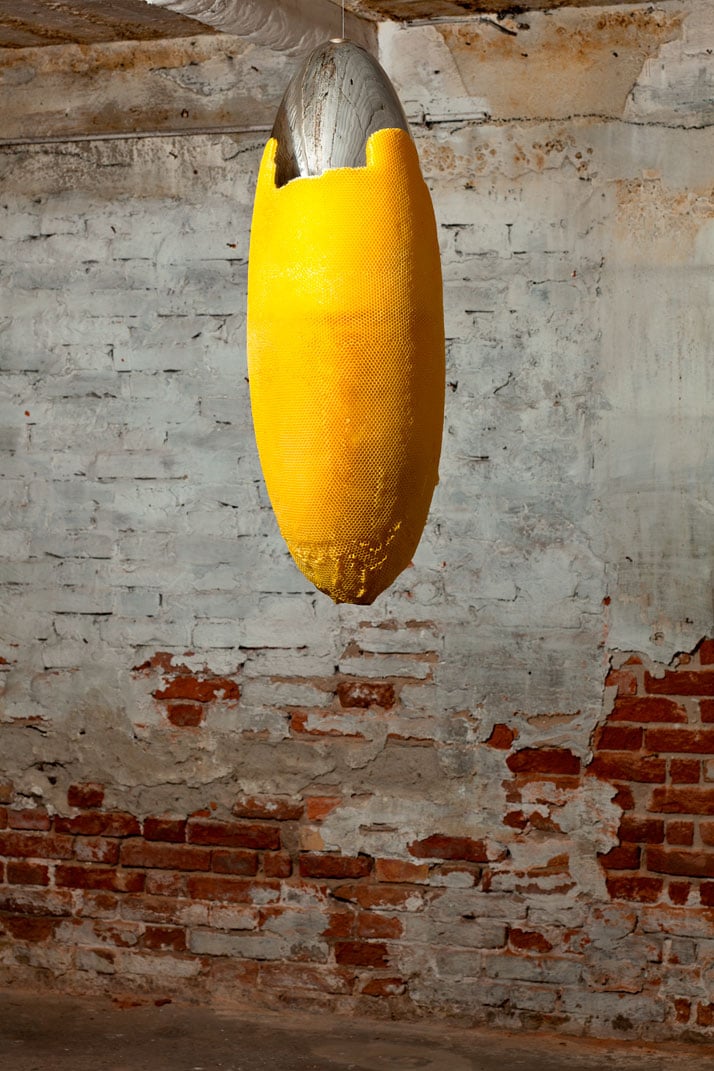
Tomáš Libertíny, The Seed of Narcissus, 2011.
beeswax, glass, silver, stainless steel.
95 x 40 x 40 cm.
Collection: MUDAC Museum of Lausanne.
photo © Francesco Allegretto.
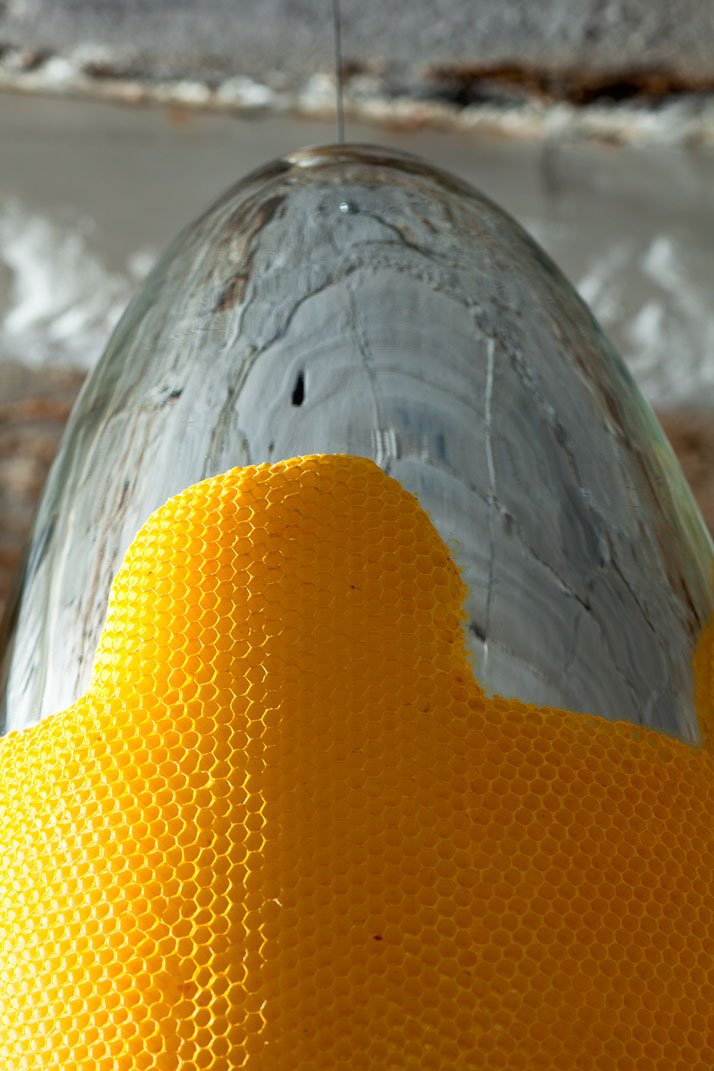
Tomáš Libertíny, The Seed of Narcissus (detail), 2011.
photo © Francesco Allegretto.
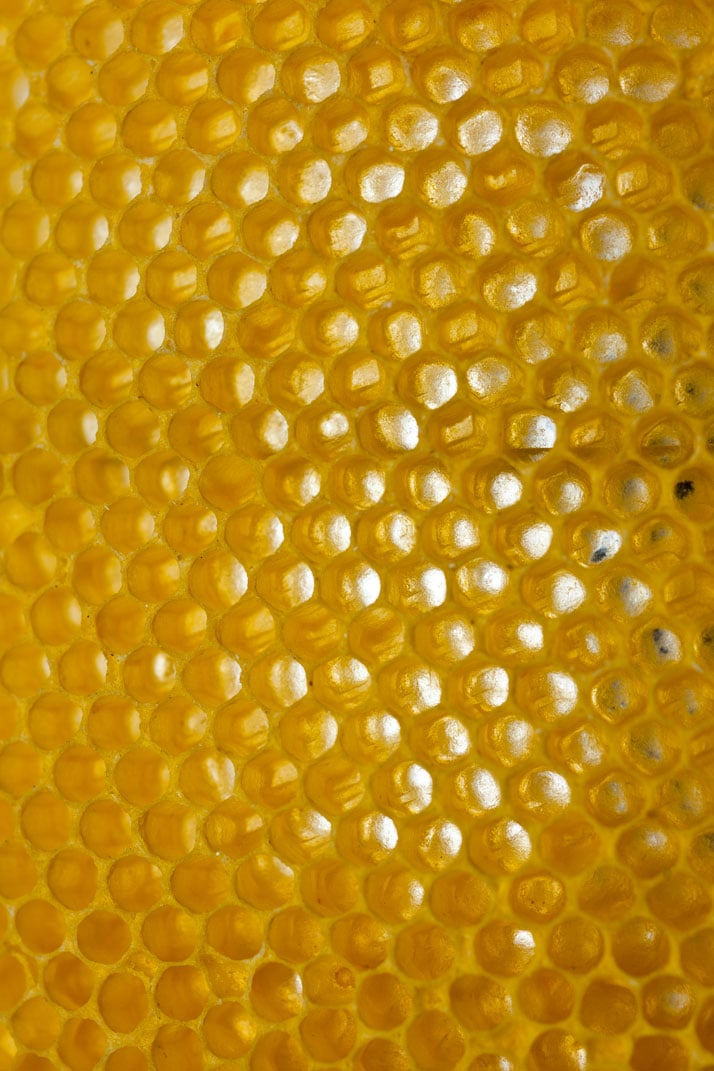
Tomáš Libertíny, The Seed of Narcissus (detail), 2011.
photo © Francesco Allegretto.




